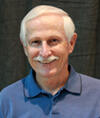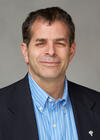In The News: College of Sciences

Which public agencies are keeping an eye on asbestos fibers generated by a massive highway project? The I-11 Bypass is being built right through the heart of natural asbestos fields in southern Nevada, but it's not always clear which government entities should be monitoring potential health risks.

Frank Van Breukelen is a UNLV researcher who studies Pupfish. He said the fish help scientists understand humans and evolution.

Nevada has recently experienced something called an earthquake swarm. An expert says the phenomenon may signal there's something much bigger on the horizon.

Our solar system may have once been a much more crowded place than it is today.
A study has suggested at least one super-Earth sized planet may have formed in the early days of the solar system before being devoured by the sun.
At least one super-Earth — a planet that is larger than Earth, but smaller than Neptune — could have formed close to the Sun, suggests a new study.
A super-Earth may have once formed close to the sun.
Findings of a new study suggest that this young super-Earth formed after clearing up the solid objects that lay between the sun and Mercury. Unfortunately, this primordial world was eventually consumed by the solar system's star after succumbing to its gravity.

The Las Vegas Valley Water District temporarily fixed the residential roadway that left one woman and her children stuck after driving into a sinkhole on Monday.
The Friends of Gold Butte Speaker Series in Mesquite will open a new year on Wednesday night.
From injectable HIV meds via CytoDyn's PRO 140 to HIV prevention via PrEP, from subdermal implants and cellular scissors to x-ray crystallography, this has been an amazing year for medical breakthroughs in HIV. Here's a roundup of some of the hottest new advances and studies in the field.
Listener Hutch Humphreys of San Diego sent Marketplace this question: “I was wondering what research has gone into the various algorithms airlines use for boarding passengers, and why most of those algorithms do not seem to work very well.”

There are planets close enough to each other that could share life and boost its survival, a new study suggests. Scientists are exploring the potential presence of "multihabitable systems," planetary systems with more than one habitable planet.
Aside from a handful of astronauts, the only living beings to have seen an inhabited planet looming large in the sky come from science fiction.



